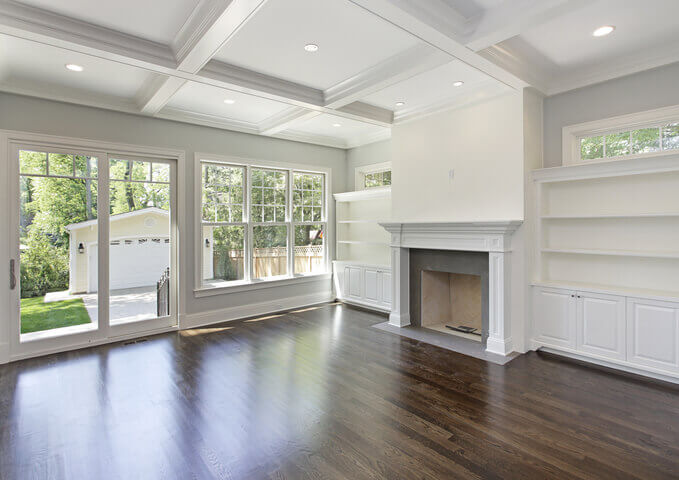
If your family is growing or you have the need for more space, you have two options: build an extension on your existing house, or move. But moving can be a stressful and costly experience. If you like your neighbourhood and just need a little more room to enjoy it, why move? Instead, improve.
Here are 5 reasons to consider a home addition in lieu of moving:
1. Closing costs from selling
When you move, there are a number of costs that are unavoidable. This includes realtor fees, home staging, home inspection, lawyer’s fees, and land transfer taxes. You may also have to pay a penalty to close your existing mortgage if you’re not able to transfer it to the new home.
You’ll also face fees for setting up new utility accounts (some may even require a security deposit).
Unless you’re moving to a brand new or custom home there’ll likely be some renovations you’ll want to undertake before or shortly after you move. They can be cheap touch-ups like paint jobs, or costly ones such as a complete renovation. This can all add up to be more expensive than a home addition cost.
2. Family upheaval
If you have school-age children and you move out of their school district, you may not be able to keep them in the same school. That can result in stress and anxiety of having to leave their friends and make new ones.
On the other hand, if your school board allows the kids to stay at their school, you’ll have to figure out transportation to get them there and back.
If you’re moving from the city to a rural area, you’ll have to factor in longer commute times to and from work.
Longer travel times may mean that you and your children will have to join new sports teams, health clubs, and other recreational programs as well.

3. Headaches and hassles
Before you move (or soon after) you’ll have to update a number of different companies and government organizations with your new contact info. To start with, you’ll need to change the address on your driver’s license, health care card, and various other forms of official identification.
You’ll need to inform your bank, Revenue Canada, the municipal revenue department for water and property tax bills, your home and auto insurance provider, and your employer. You’ll also want to inform your family doctor, dentist, eye doctor, and any specialists you see or, if you’re moving far away, arrange to have all your medical records transferred to your new doctors.
In addition to setting up new utility accounts, you’ll also have to contact your current providers to close or transfer the accounts to the new owners.
Finally, don’t forget your mail. You’ll need to notify friends and family of your new address, update newspaper and magazine subscriptions. You can pay Canada Post to forward your mail ($54.25 for four months; $83.15 for a year) in case you forget anything important.
4. Packing and moving
Anyone who has ever moved knows what a hassle the process is. You have to gather (or buy) boxes and packing tissue to pack everything away in. Purge as many unnecessary items as possible along the way. Once you’ve moved into the new house you’ll have to undergo the whole process over again in reverse. You’ll inevitably find out that at least a few items broke along the way.
On moving day, you’ll have to figure out the logistics of emptying your fridge and freezer and getting them into the new ones before your perishables are ruined.
Costs for moving an entire home full of furniture, appliances, and household items can end up totalling over $1,000. If you’re moving to a home that’s being renovated you may also have to factor in the cost of storage and short-term accommodation for your family.

5. Designer’s choice
The best reason to not move: with a home addition you can turn your current home into your dream home. When taking on this type of renovation project, the changes don’t have to be limited to the addition. For example, one bedroom can get a walk-in closet and an en-suite bathroom.
On the main floor, you can extend your kitchen into the home addition. Or, create a family room or living room that flows together as part of your home addition plans.
And if you excavate a full basement extension you may finally be able to have the basement entertainment area you only ever dreamed about.
On the exterior, the home addition can give you the opportunity to update old siding or roofing shingles so everything blends in seamlessly.

To gather new design ideas and average market prices visit Reno-Inspiration to see our past customers’ various home addition projects and their associated costs. You can also visit the RenoAssistance home addition page for further information on planning your home addition project and get an idea of the potential cost of a house extension or cost of adding a room. You can even take a look at our 9 steps to a successful home addition article.
When it comes time to finding your home addition contractor, choose a RenoAssistance Verified Contractor to ensure the project gets completed seamlessly. All the contractors we work with have been checked to ensure they have all the required licences and insurance. They also have glowing recommendations from past clients, and the expertise to do the job properly. Best of all, using RenoAssistance is free for homeowners. Call us now to get started or fill out our form.
Also read

Converting a Garage into Liveable Space

Multigenerational Homes: A Winning Formula for Families

Building a House Addition: Planning, Costs, and Ideas

2024 Home Addition Costs | Montreal vs Toronto

Renovate or Move: Reasons to Build a House Addition

5 Reasons to Build a Home Addition

The Complete Guide to Your Toronto Home Addition

Adding a Second Storey: All There Is To Know

Questions to Ask Yourself Before Building an Addition or Extending a House

The 3 Most Common Types of Home Additions